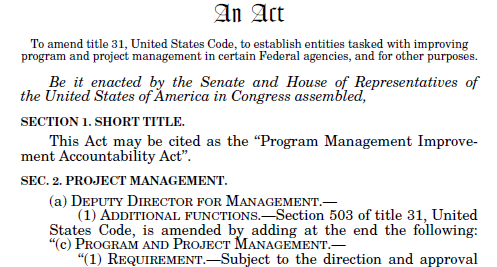Architectural Icon
“Before the Big Dig, there were the pyramids … I’m just saying.
A strong nominee for a megaproject that rates as far down the organizational ladder as possible, while at the same time scoring rock bottom as an architectural icon, was Boston’s notorious Big Dig. The recent $1B[i] underestimate for that city’s Green Line[ii] supports the contention that megaprojects do not benefit from lessons-learned. If we examine several recent megaprojects we note some disturbing trends of them to go off the budget and schedule rails long before they are even shovel-ready. Both East Side Access and DHS St. Elizabeth’s will take longer to build than the infamous Hubble Telescope:
The unheralded megaproject known as the DHS/NSA Campus, in Southeast, Washington DC, exemplifies egregious mismanagement decisions at the planning level. Considering the oversight, at left, we understand the utter ineptitude of the mega-planners for the DHS/NSA campus (Graham, 2015)
Bent Flyvbjerg believes that megaprojects are congenital losers: that they have a “disaster gene” built in, as he said in this 2004 interview:
Why would so many megaprojects end up with problems? Because a “disaster gene” has been built into them. It goes like this. When a megaproject is proposed and appraised, promoters typically overestimate the benefits that will derive from the project and they similarly underestimate the costs. This creates enormous risks with projects. Underestimated costs come back as a boomerang to haunt projects as cost overruns (Ehrenfeucht, 2004)
Consider the recent US effort to build a refueling petrol station in Afghanistan. BBC reports:
The US Department of Defense has spent $43m (£28m) on a vehicle fueling station in Afghanistan according to a recently published oversight report.
“The project was intended to show how Afghanistan’s natural gas reserves could be used as an alternative to expensive petroleum imports. However, it cost more than 140 times that of a similar project in neighboring Pakistan. The report called the spending “gratuitous and extreme.” The highly critical report was published by the Special Inspector General for Afghanistan Reconstruction, a group overseeing the use of the approximately $110bn the US has spent in Afghanistan since 2002. “It’s an outrageous waste of money that raises suspicions that there is something more there than just stupidity. There may be fraud. There may be corruption,” said John Sopko, special inspector general for Afghanistan Reconstruction (BBC, 2015) No architectural icon in that desert.

If the US can spend $43M on a micro-project like a gas station, just think of the cost of the fully rigged $110B military megaproject in Afghanistan, and you have some idea of how quickly a megaproject can take on a life of its own. The rest of the worlds’ armies were also beneficiaries of the US munificence. $700M of the appropriations covered eats and laundry at extortionary levels for the GIs, some of whom were from other armies – an oversight cost the Army maintained in secret.[iv]

(above, partially hidden digs for the USCG building (we can still see them))
It is surprising and disappointing to witness the level of ineptitude of the DHS Campus planners. The fragmentation of the campus locations (multiple remote repurposed structures) doomed the project from the start, as did the lack of a road to the main campus. But planners don’t see it that way, and instead boast about the building they did finish for the US Coast Guard. I call this strategic distraction: a relative of strategic misrepresentation.
President Trump’s first Executive Action called for immediate ratification of Obama’s stalled PMIAA, or the Program Management Improvement and Accountability Act of 2015, which I have previously discussed the merits and shortcomings of, in a recent post. Basically, the bill applies only to Federal work. It appoints, or rather anoints, the PMI to research and develop standards of project delivery and program management that are intended to improve a pedigree of chronic failure to launch, or rather, consistent failure. The bill doesn’t only pertain to the building industry, but to other programs.

PMI will work with members of the private sector, so as to incorporate as much perspective as possible. On the other hand, the bill completely disregards peer agencies, such as Lean Construction Institute, AACE, and FAIA, as well as valuable input from university professors, researchers, and writers. The efficacy and fiscal value of such an endeavor is impossible to assess.
It is within this confinement of knowledge that I completely object to: since when was PMI the last word in the industry? PMI represents just one of many schools of thought. Besides, plenty of PMI certified professionals have presided over plenty of Federal megaproject flops, and will continue do do so.
If a substantial infrastructure bill is passed by the Trump administration, there will be ample opportunity to see if things have improved, or not.
[i] The contract bid was $3B.
[ii] http://www.constructiondive.com/news/critics-blame-soaring-costs-of-boston-rail-line-on-white-skanska-kiewit-max/405629/
[iii]
[iv] http://on.wsj.com/1H3r0E7
#megaprojects #project management #PMIAA









